Antonio Canova’s funerary monument of Pope Clement XIV – a quiet grief of final parting
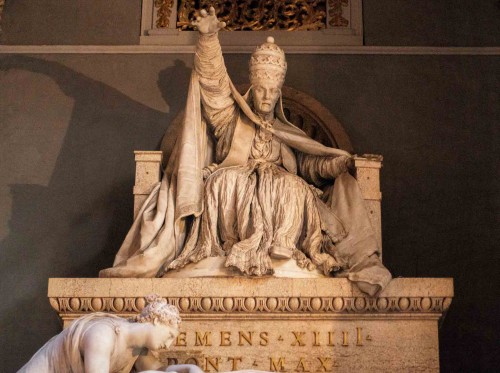
Antonio Canova’s funerary monument of Pope Clement XIV, fragment, Basilica of Santi Apostoli
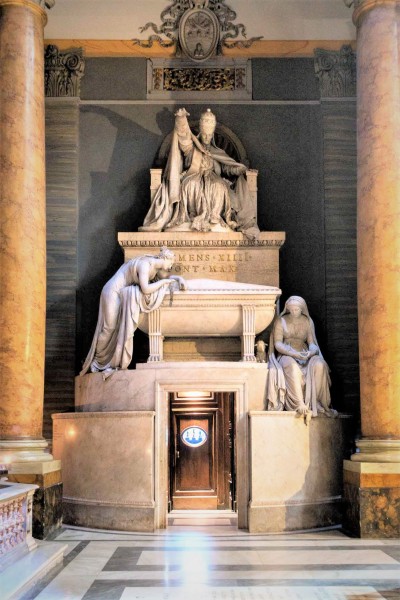
Antonio Canova’s funerary monument of Pope Clement XIV, Basilica of Santi Apostoli
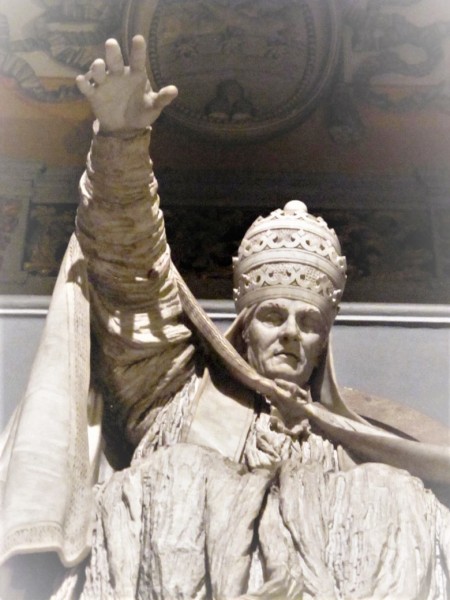
Antonio Canova’s funerary monument of Pope Clement XIV, fragment, Basilica of Santi Apostoli
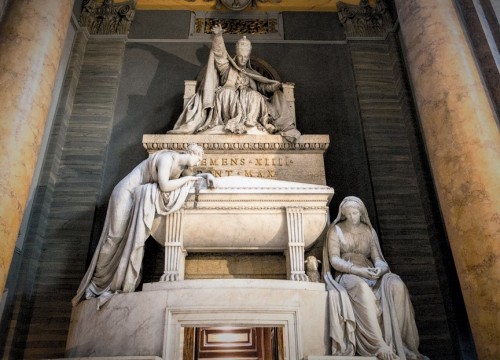
Antonio Canova’s funerary monument of Pope Clement XIV, Basilica of Santi Apostoli
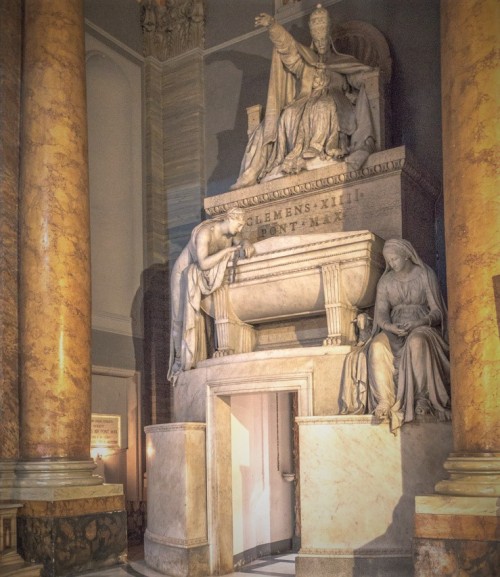
Antonio Canova’s funerary monument of Pope Clement XIV, Basilica of Santi Apostoli
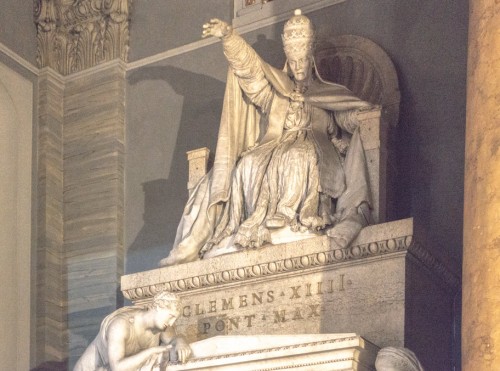
Antonio Canova’s funerary monument of Pope Clement XIV, fragment, Basilica of Santi Apostoli
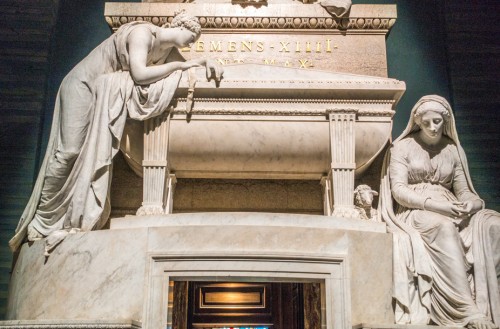
Antonio Canova’s funerary monument of Pope Clement XIV, fragment, Basilica of Santi Apostoli
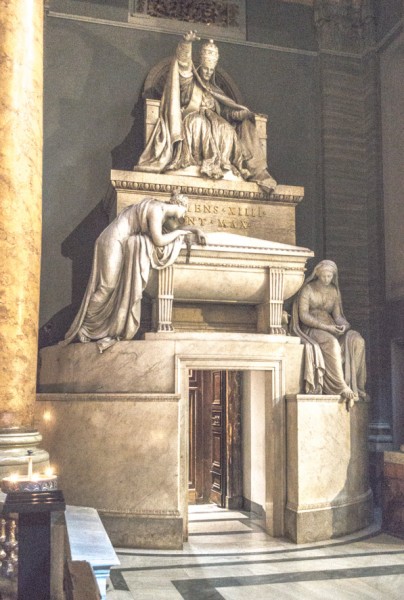
Antonio Canova’s funerary monument of Pope Clement XIV, fragment, Basilica of Santi Apostoli
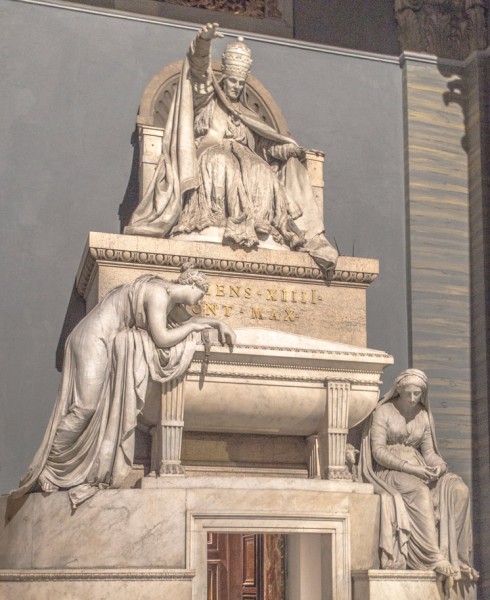
Antonio Canova’s funerary monument of Pope Clement XIV, Basilica of Santi Apostoli
A liberal, “the conqueror” of the Jesuits and the founder of the Museo Pio-Clementino (presently a part of the Vatican Museums) died in 1774. Eight years later, one of his nepots assigned a later large sum to put up an appropriate monument for the pope in the Basilica of Santi XII Apostoli. Its author Antonio Canova created a work that was new in form and expression, which at the blink of an eye made him famous throughout Europe. Funerary art, starting at that very moment, changed its face, making Canova into an innovator, while at the same time the best continuator of the great Gian Lorenzo Bernini.
A liberal, “the conqueror” of the Jesuits and the founder of the Museo Pio-Clementino (presently a part of the Vatican Museums) died in 1774. Eight years later, one of his nepots assigned a later large sum to put up an appropriate monument for the pope in the Basilica of Santi XII Apostoli. Its author Antonio Canova created a work that was new in form and expression, which at the blink of an eye made him famous throughout Europe. Funerary art, starting at that very moment, changed its face, making Canova into an innovator, while at the same time the best continuator of the great Gian Lorenzo Bernini.
The pope’s monument is found high above the rounded enterance into the church sacristy and strikes with decisive frontality of the composition. We must look upon it lifting our gaze up high – and we stand taken aback by the quiet grief and sadness emanating from the two allegories placed by the sarcophagus, found in the lower part of the composition. As opposed to them, the enthroned figure of Clement XIV expresses strength, while his hand stretched out in a gesture of blessing, could very well belong to a pontifex giving out an order.
And while the figure of the pope in a heavily draped garment seems to be well rooted in the Baroque, the lower part of the composition is in a stillness previously unknown. This happens due to the aforementioned motionless allegories. Each of them exists unto itself, hermetically closed in her own world of thoughts and feelings. One of them is Temperance, the other Humility (the one with a lamb at her side). However, this is not about showing off – through these images – the characteristics of the deceased himself, as was the habit until then. Both the figures are above all mourners, grieving over the pope’s death. However, each of them does it in her own way. The younger (Temperance) in a quiet, but visible grief leans on the sarcophagus, in a gesture of tenderness covering it with a shawl held in her hand, as if not agreeing with his death. The other, older in a veil on her head, is sitting her gaze fixed on one spot, as if she was numb from what had happened. Her lowered head and hands folded express limitless grief. The women seem to be the central figures of the monument and the carriers of certain meanings. They force us to experience their grief, appeal to our deepest emotions, draw us into a world filled with a sensation of unrecoverable loss. The artist burdens the viewer with melancholy, which puts him in a sentimental, but not bereft of pathos contemplation. Canova discovered these feelings in classical art, especially Greek. He took from it not only the dress of the women, but also their figures from the funerary stelas and ancient sculptures, drawing at the same time from iconographic motifs (Pieta, the suffering of Our Lady under the cross, the quiet grief of Mary Magdalene) which had been present for centuries in Christian art. Death is a tragedy, offers no consolation, it is an eternal parting, forever. And that is the message that can be seen in the work a declared Roman Catholic, Canova.
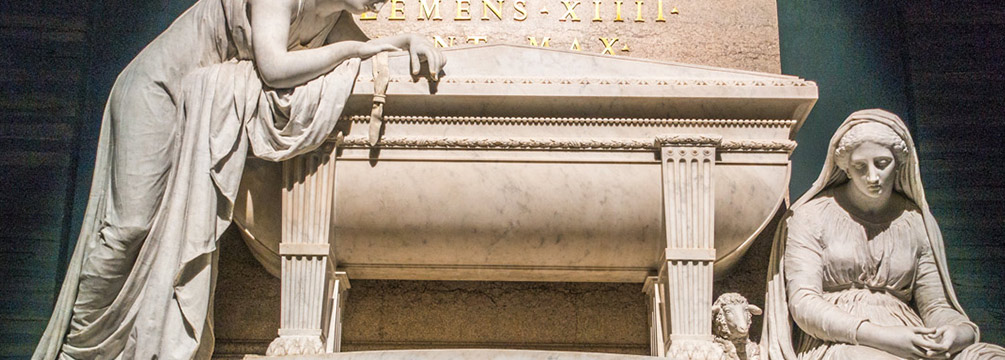
This is truly revolutionary transformation from an image of the successor of St. Peter immortalized in glory to a mourned one, was later imitated by many artists, while the lost in grief figures of women of delicate beauty in antique dress became part of funerary art and filled not only churches but cemeteries for centuries to come.



























